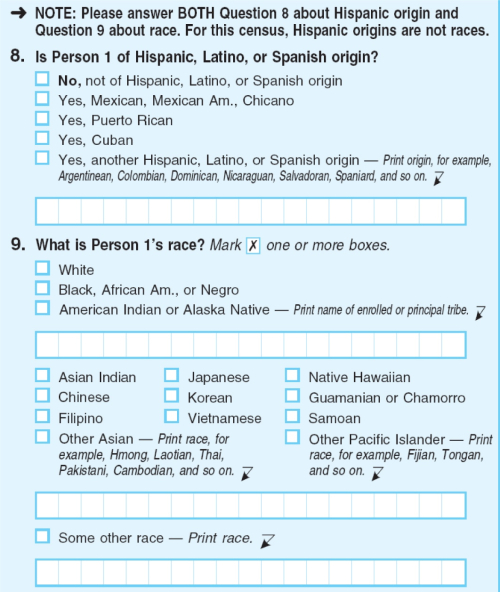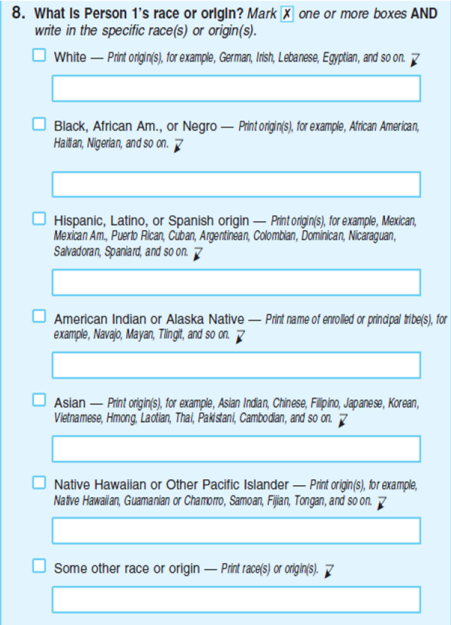By Dr. Ken Broda Bahm:
 The racial composition is probably one of the first things we notice when venire members file in before jury selection. When recruiting for a mock trial, we will try to match the composition of the venue. Along with other demographics, race is not nearly as predictive as some might think. As a result, race is not used by trial consultants nearly as much as some critics of the field would think. Still race is part of the overall picture of knowing your trial venue, a salient aspect of one’s lived experience; and race is changing. That occurred to me at a recent mock trial when I noticed that nearly a third of our recruits were identifying as “Other” when asked to identify their race in the initial questionnaire. I had seen this before on other projects, and it gave me a sense that something was going on; many were broadly rejecting the categories we had given them.
The racial composition is probably one of the first things we notice when venire members file in before jury selection. When recruiting for a mock trial, we will try to match the composition of the venue. Along with other demographics, race is not nearly as predictive as some might think. As a result, race is not used by trial consultants nearly as much as some critics of the field would think. Still race is part of the overall picture of knowing your trial venue, a salient aspect of one’s lived experience; and race is changing. That occurred to me at a recent mock trial when I noticed that nearly a third of our recruits were identifying as “Other” when asked to identify their race in the initial questionnaire. I had seen this before on other projects, and it gave me a sense that something was going on; many were broadly rejecting the categories we had given them.
That rejection is not limited to my mock trial sample. News in the last few weeks indicates that the U.S. Census Bureau is looking at revising the race question. Apparently, “Other” has been the third largest racial group in America for the past 20 years. With the goal of reducing that proportion, the Census hopes to develop a sharper and more comprehensive understanding of the complexity of America’s racial background. Others who analyze groups of people for the purpose of research or persuasion should take notice. When we are picking jurors, sampling for mock trials, or finding participants for community attitude surveys, it helps to know what we should be looking for when it comes to race. This post will take a look at the changes being considered, along with implications for litigators and researchers.
The Census Change
The current version is confusing. It appropriately treats “Hispanic” as an origin rather than a race, but that double layer has been confusing to many respondents and has resulted in some inconsistencies. In addition, there are also the subjectivities of skin color to contend with: Is a person from the Middle East “white,” for example?
Here is the current version.
U.S. Census 2010 (Current Version)
And here is the new version, released in February, that is being considered.
U.S. Census (Proposed Change)
This proposed change has met with generally positive reviews. A hashtag, #Notjustother, has even sprung up for many commenters celebrating that they will be “Not Just ‘Other'” in identifying their race. Of course, there will always be some controversies. For example, those with a Middle Eastern or North African heritage have long fought for the “MENA” category included above, but now with Donald Trump in the President’s office, some aren’t sure that Arab-Americans and others from the region will want to identify as such in a government census.
Implications for Research and Practice in Trial Persuasion
Assuming that the proposed version goes into effect, researchers, including litigation consultants, should consider modeling their own measurement of race after the Census. Doing that will make it easier to match samples to venues.
There are a few other general considerations worth noting about the new approach.
It’s About Identification
Prior to 1960, the U.S. Census did not even allow respondents to choose their own race. That information was recorded, but was filled in by the census taker. Since then, we have hopefully learned that it is not a matter of just looking at someone and deciding their race. It is as much about group identification as it is about genetics.
It’s About Multiples
The statistics are always going to be cleaner if you can get people to pick one category for race identification. Prior to 2000, citizens had to “pick one” for the Census. Even today, that desire for simplicity is probably behind researcher’s attempt to arrive at one race by asking, for example, “What race do you most closely identify yourself as?” But that is consciously leaving out information, and it creates a frustrating question for a biracial person; it is like asking, “Do you identify more closely with your mother’s or your father’s genes?” For the person who wants to say “Both,” racial identifiers should allow for multiple responses.
It’s Open-Ended
What stands out the most about the revised version is that all of the categories are fill-in-the-blank questions. Even ‘White” follows up with an “origin” to include. It will be interesting to see how people use these open-ended categories, and to find out what that additional layer of data will tell us.
______
Other Posts on Demographics:
______
Image credit: 123rf.com, used under license

